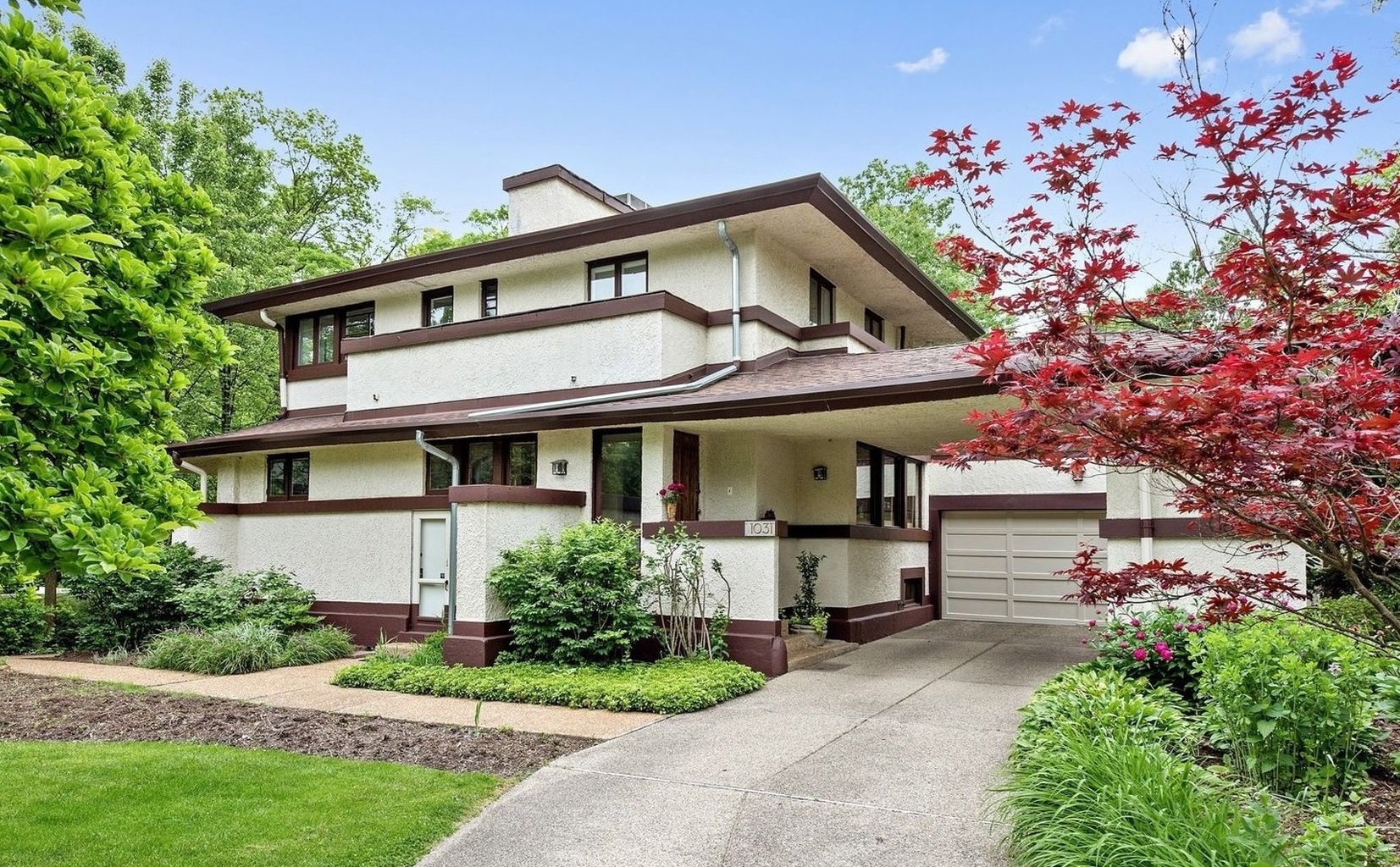#12047. Elegant Prairie Style Façade: Harmony of Horizontal Lines and Contrasting Accents

The house presented in the image exemplifies the Prairie style architecture, created by famous American architect Frank Lloyd Wright in the early 20th century. The façade is characterized by horizontal lines, emphasized by wide eaves and dark brown horizontal elements that contrast with the main light stucco surface of the walls.
The architectural composition of the house features clear geometry and balanced volumes. The two-story structure has a flat roof with wide overhangs, which is one of the key characteristics of the Prairie style. The horizontality of the façade is enhanced by elongated window openings with characteristic dark wooden frames, as well as decorative bands encircling the building.
The color scheme of the façade deserves special attention – the combination of a cream base tone with dark brown accent elements creates an elegant and harmonious appearance. The garage is integrated into the overall composition of the house, continuing its stylistic features. An interesting technique is the use of identical materials and color schemes at different levels of the building, ensuring a cohesive visual experience.
In the landscaping of the adjacent territory, the effective use of Japanese maple with red foliage stands out as a bright accent, contrasting with the façade of the building. The landscape design with low shrubs and a neat lawn emphasizes the horizontal lines of the architecture.
When designing your own façade in a similar style, it's worth paying attention to the following techniques: using horizontal accent stripes of contrasting color, wide roof overhangs, integrating window openings into the overall composition, combining natural materials, and harmoniously interacting with the surrounding landscape. It's also important to maintain proportions and geometric clarity of forms.